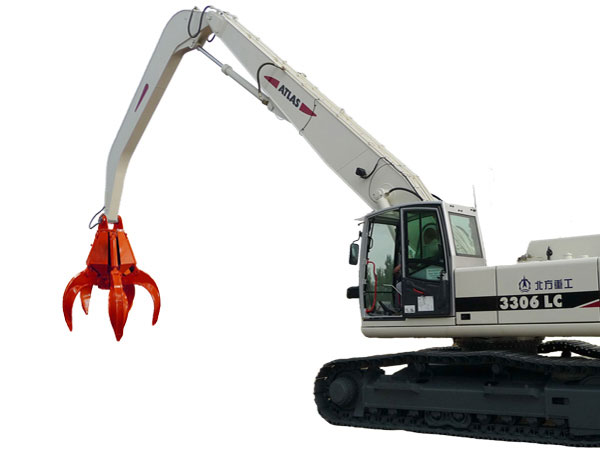How to Calculate Excavator Bucket Capacity
Bucket capacity is a measure of the maximum volume of the material that can be accommodated inside the bucket of the backhoe excavator. Bucket capacity can be either measured in struck capacity or heaped capacity as described below:
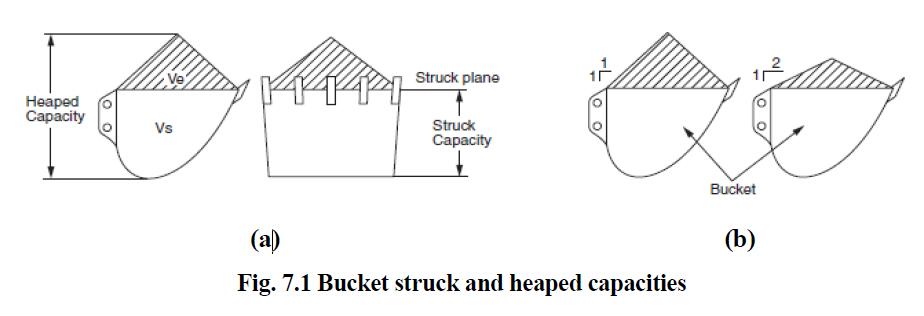
Struck capacity is defined as: The volume capacity of the bucket after it has been struck at the strike plane. The strike plane passes through the top back edge of the bucket and the cutting edge as shown in Fig. 7.1 (a). This struck capacity can directly be measured from the 3D model of the backhoe bucket excavator.
On the other hand the calculation of the heaped capacity is done by following the standards. Globally two standards used to determine the heaped capacity, are: (i) SAE J296: “Mini excavator and backhoe bucket volumetric rating”, an American standard (Mehta Gaurav K., 2006), (Komatsu, 2006) (ii) CECE (Committee of European Construction Equipment) a European standard (Mehta Gaurav K., 2006), (Komatsu, 2006).
Heaped capacity is defined as: The sum of the struck capacity plus the volume of excess material heaped on the bucket at a 1:1 angle of repose (according to SAE) or at a 1:2 angle of repose (according to CECE), as shown in the Fig. 7.1 (b). This in no way implies that the hoe must carry the bucket oriented in this attitude, or that all material will naturally have a 1:1 or 1:2 angle of repose.
As can be seen from the Fig. 7.1 the heaped capacity Vh can be given as:
Vh=Vs+Ve …. (7.1)
Vh=Vs+Ve …. (7.1)
Where, Vs is the struck capacity, and Ve is the excess material capacity heaped either at 1:1 or at 1:2 angle of repose as shown in Fig. 7.1 (b).
Firstly, from Fig. 7.2 struck capacity Vs equation will be presented, then by using two methodologies SAE and CECE, two equations of excess material volume or capacity Ve will be presented from Fig. 7.2. Finally bucket heaped capacity can be found from equation (7.1).
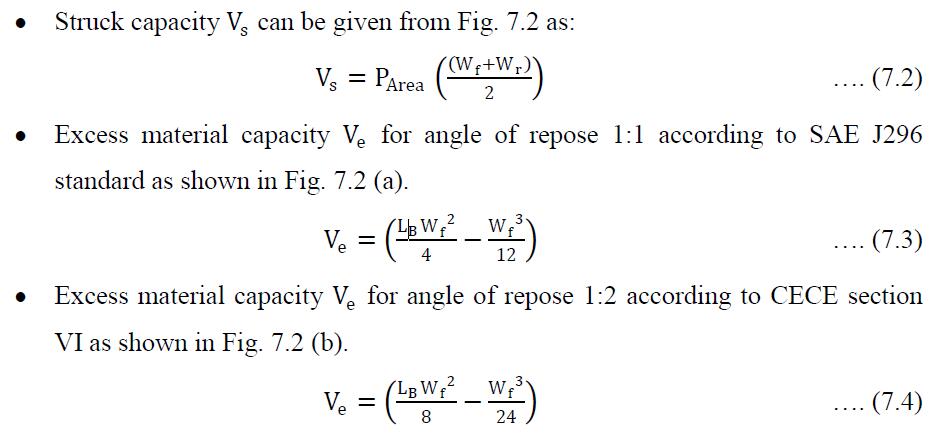
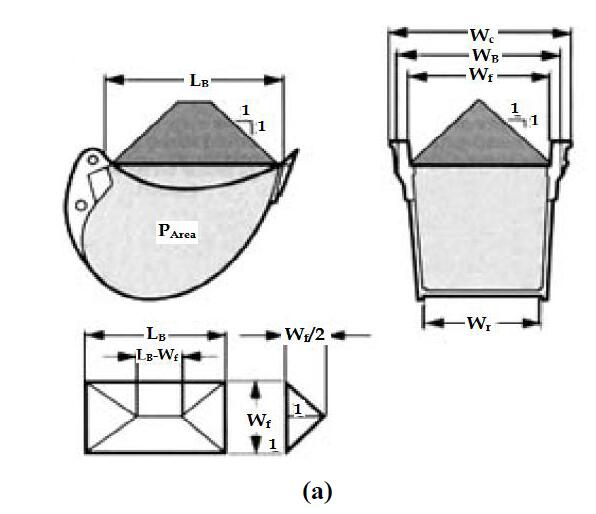
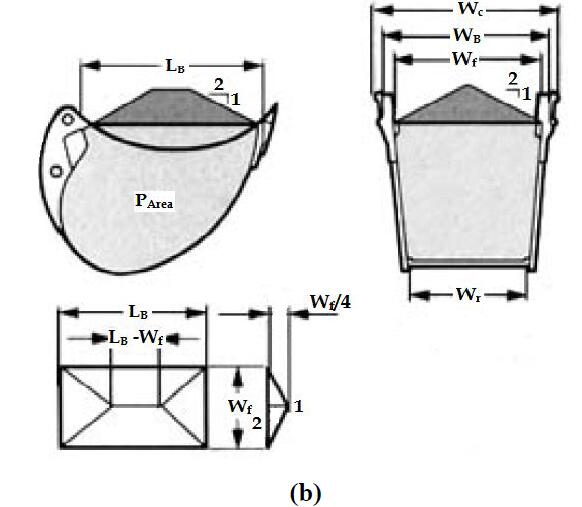
Fig. 7.2 Bucket capacity rating (a) According to SAE (b) According to CECE
- The description of the terms used in Fig. 7.2 is as follows:
- LB: Bucket opening, measured from cutting edge to end of bucket base rear plate.
- Wc: Cutting width, measured over the teeth or side cutters (note that the 3D model of bucket proposed in this thesis is only for light duty construction work, so side cutters are not attached in our model).
- WB: Bucket width, measured over sides of bucket at the lower lip without teeth of side cutters attached (so this will also not to be the important 108 parameter for the proposed 3D model of bucket as it does not contain any side cutters).
- Wf: Inside width front, measured at cutting edge or side protectors.
- Wr: Inside width rear, measured at narrowest part in the back of the bucket.
- PArea: Side profile area of bucket, bounded by the inside contour and the strike plane of the bucket.
Fig. 7.3 shows the important parameters to calculate the bucket capacity for the proposed 3D model of bucket. The calculation done is based on SAE standard as this standard is globally acceptable and used.
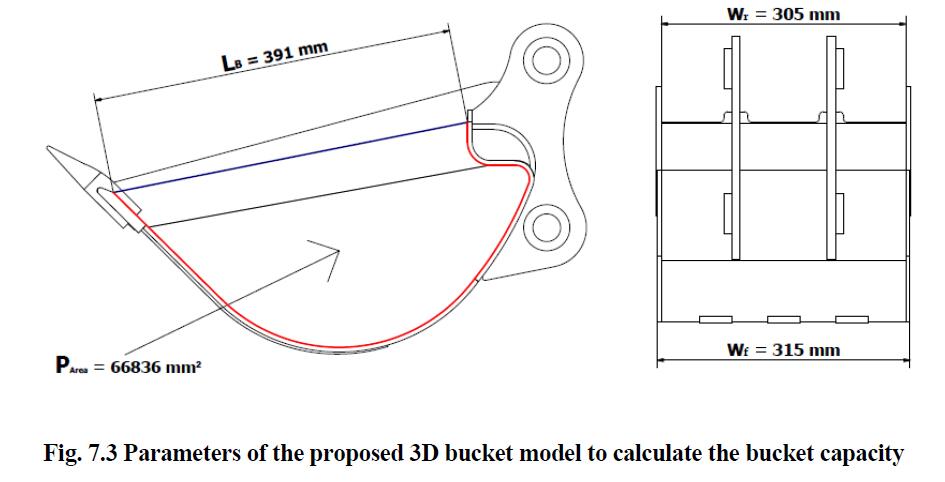
As can be seen from the left side of the Fig. 7.3 PArea is the area bounded by struck plane (blue line) and side protector (red curve), and it is 66836 mm2.
By using equations (7.1), (7.2) and (7.3) the bucket capacity for the proposed 3D backhoe bucket model comes out to be 0.02781 m3 = 0.028 m3.



